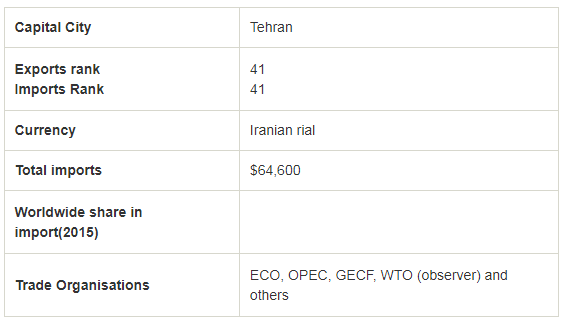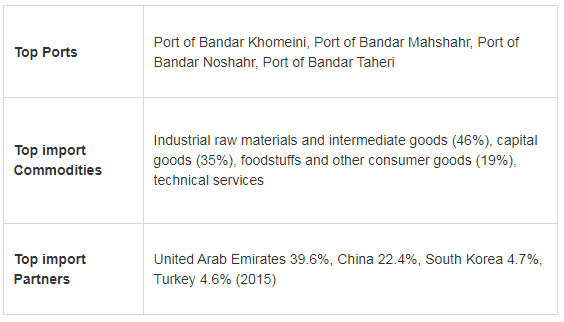Officially the Islamic Republic of Iran is a sovereign state in Western Asia with over 81 million inhabitants, Iran is the world’s 18th-most-populous country. Comprising a land area of 1,648,195 km2, it is the second-largest country in the Middle East and the 17th-largest in the world. Iran is bordered to the northwest by Armenia and the Republic of Azerbaijan, to the north by the Caspian Sea, to the northeast by Turkmenistan, to the east by Afghanistan and Pakistan, to the south by the Persian Gulf and the Gulf of Oman, and to the west by Turkey and Iraq. The country’s central location in Eurasia and Western Asia, and its proximity to the Strait of Hormuz, give it geostrategic importance. Tehran is the country’s capital and largest city, as well as its leading economic and cultural center
———————————–
Read the article “Tile Market & Industry In Iran“, for more information
———————————–
Iran import Analysis

Trade Policies
Iran has extensive tariffs on imports and exports across a range of goods in the country. Imports valued at over US$50,000 are subject to a pre-shipment quantity and quality inspection. The inspector must be an internationally recognised organisation that inspects all goods at the country of origin. The Iranian Embassy has imposed a variety of tax/tariff rates on varying goods, ranging from 10 to 25 per cent, with automotive vehicles at 100 per cent. One of the most important Iran’s strategies was shifting trade away from Europe toward Asia, which is called Asianization or de-Europeanization of Iran’s foreign trade. In other words, Iran has tried to expand its trade relationships with the Asian countries to replace the European trade partners with them
———————————–
Read the article “how to buy and import tile from iran“, for more information
———————————–
Import Export Market Research

———————————–
Read the article “The History of Persian Tile“, for more information
———————————–